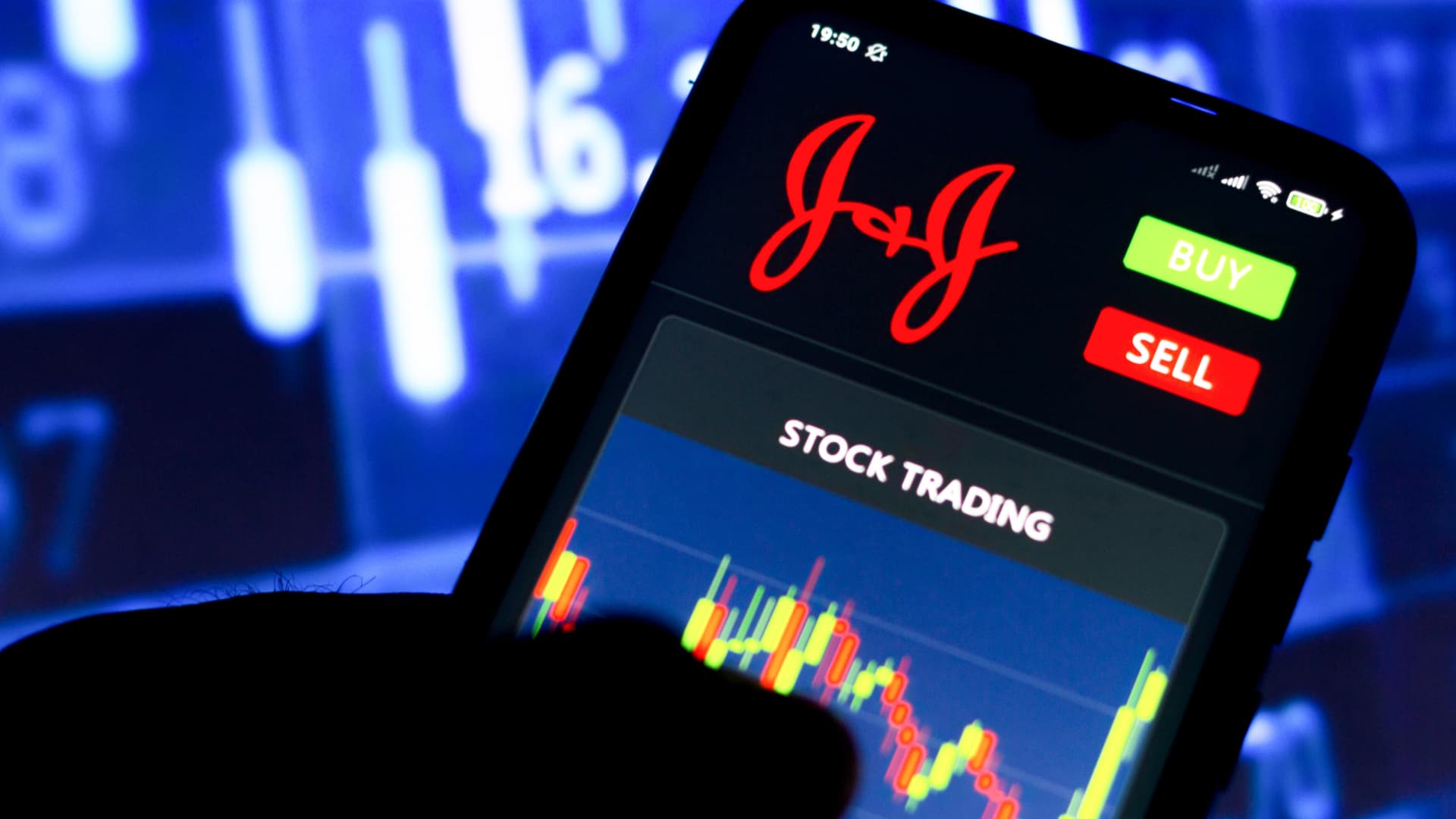Johnson & Johnson on Tuesday reported fourth-quarter earnings and revenue that narrowly edged out Wall Street’s expectations as sales in the company’s pharmaceutical and medical devices businesses surged.
J&J also provided full-year guidance for 2024, forecasting sales of $87.8 billion to $88.6 billion and adjusted earnings of $10.55 to $10.75 per share.
Here’s what J&J reported for the fourth quarter compared with what Wall Street was expecting, based on a survey of analysts by LSEG, formerly known as Refinitiv:
- Earnings per share: $2.29 adjusted vs. $2.28 expected
- Revenue: $21.40 billion vs. $21.01 billion expected
J&J, whose financial results are considered a bellwether for the broader health sector, booked $21.40 billion in total sales for the final three months of 2023, up 7.3% from the same quarter in 2022.
The pharmaceutical giant reported net income of $4.13 billion, or $1.70 per share during the quarter. That compares with net income of $3.23 billion, or $1.22 per share, for the year-ago period.
Excluding certain items, adjusted earnings per share were $2.29 for the fourth-quarter of 2023.
The results come six months after J&J completed its separation from its consumer health unit Kenvue, the company’s biggest shake-up in its nearly 140-year history. J&J is now zeroing in on its pharmaceutical and medical devices divisions to drive growth.
Segment results
J&J’s medical devices business generated sales of $7.67 billion, up 13.3% from the fourth quarter of 2022. Wall Street was expecting revenue of $7.50 billion, according to StreetAccount.
J&J said its acquisition of Abiomed, a cardiovascular medical technology company, in December fueled the year-over-year rise.
The company said growth also came from electrophysiological products, which evaluate the heart’s electrical system and help doctors understand the cause of abnormal heart rhythms.
Wound closure products and devices for orthopedic trauma, or serious injuries of the skeletal or muscular system, contributed, along with contact lenses.
J&J is benefiting from a rebound in demand for nonurgent surgeries among older adults, who deferred those procedures during the Covid pandemic. The company expects that high demand to “follow through” in 2024, CFO Joseph Wolk said on CNBC’s “Squawk Box” Tuesday.
Meanwhile, J&J reported $13.72 billion in pharmaceutical sales, marking 4.2% year over year growth. Excluding sales of its unpopular Covid vaccine, the pharmaceutical division raked in $13.68 billion.
It was the third quarter without any U.S. sales from J&J’s Covid vaccine, which brought in $44 million in international revenue.
Wall Street was expecting sales of $13.44 billion for the business segment, according to StreetAccount. The business, also known as “Innovative Medicine,” is focused on developing drugs across different disease areas.
J&J said growth in the division was driven by sales of Darzalex, a biologic for the treatment of multiple myeloma, along with Erleada, a prostate cancer treatment, and other oncology treatments.
J&J’s blockbuster drug Stelara, which is used to treat several chronic and potentially disabling conditions such as Crohn’s disease, also contributed to growth. J&J began to lose patent protections on Stelara late last year, which opened up the door for cheaper biosimilar competitors to enter the market. But the company has bought itself more time: J&J has inked settlement agreements with Amgen and other drugmakers to delay the launch of some Stelara copycats to 2025.
J&J said growth in the pharmaceutical segment was partially offset by a decline in sales of its prostate cancer drug Zytiga and blood cancer drug Imbruvica, which is co-marketed by AbbVie. Both Imbruvica and Stelara will be subject to the first round of Medicare drug price negotiations under the Inflation Reduction Act.
Medicare negotiations
J&J will soon begin price talks with the federal Medicare program over Stelara as well as blood thinner Xarelto.
President Joe Biden‘s Inflation Reduction Act, which passed in 2022, empowered Medicare to negotiate down drug prices for the first time in the program’s six-decade history. J&J signed an agreement to participate in the price talks in October, even after it sued the Biden administration to halt the process in July.
The negotiated prices for the drugs will go into effect in 2026.
The fourth-quarter results also come amid investor concern over the thousands of lawsuits claiming that J&J’s talc-based products were contaminated with the carcinogenic asbestos and caused ovarian cancer and several deaths.
Those products, including J&J’s namesake baby powder, now fall under Kenvue. But J&J will assume all talc-related liabilities that arise in the U.S. and Canada.
In 2021, J&J offloaded its talc liabilities into a new subsidiary, LTL Management, which immediately filed for Chapter 11 bankruptcy protection. But a federal bankruptcy judge in July rejected J&J’s second attempt to resolve those lawsuits in bankruptcy. J&J has said LTL Management intends to appeal the decision.
J&J will hold a conference call with investors at 8:30 a.m. ET.
This story is developing. Please check back for updates.
